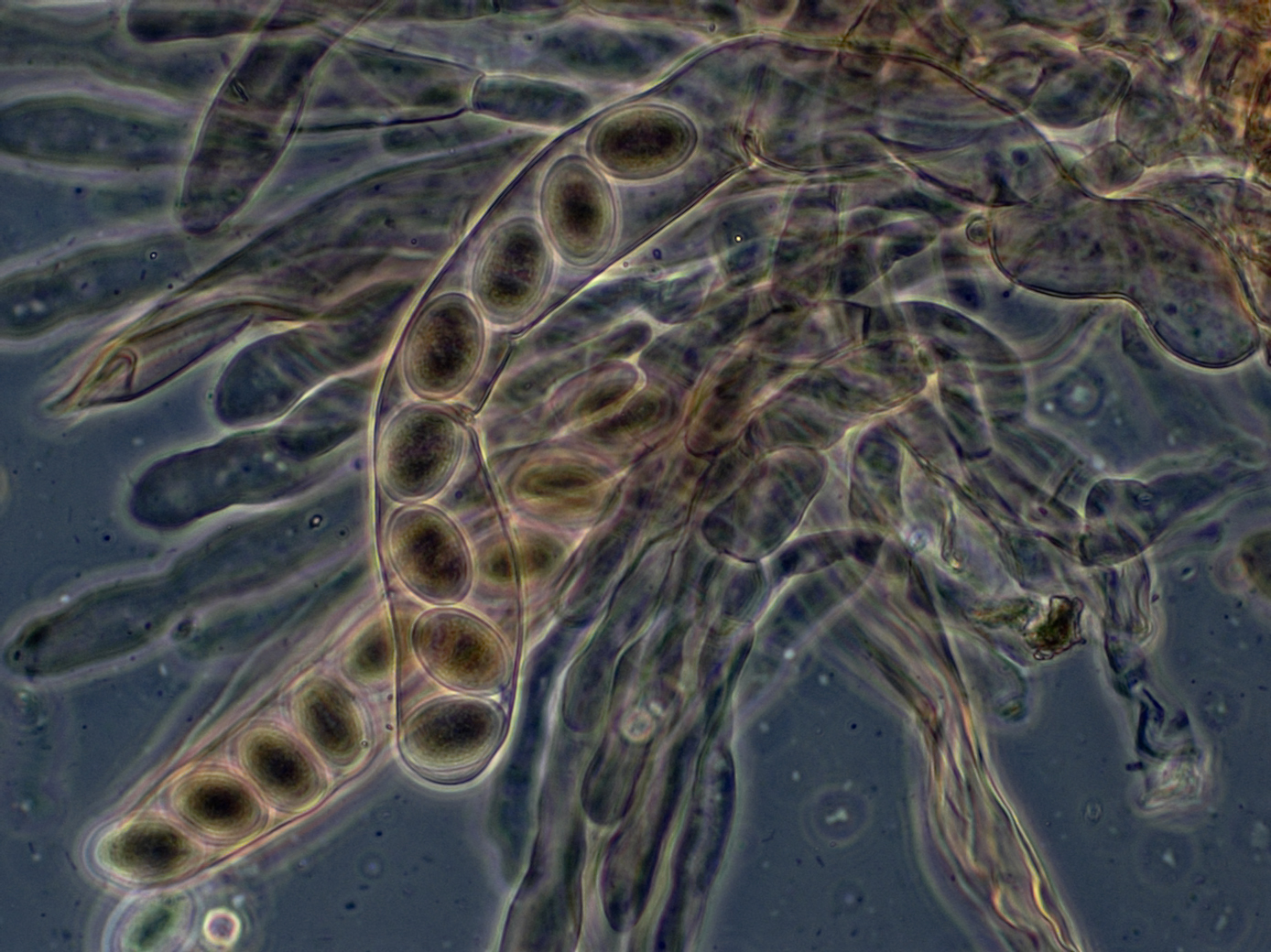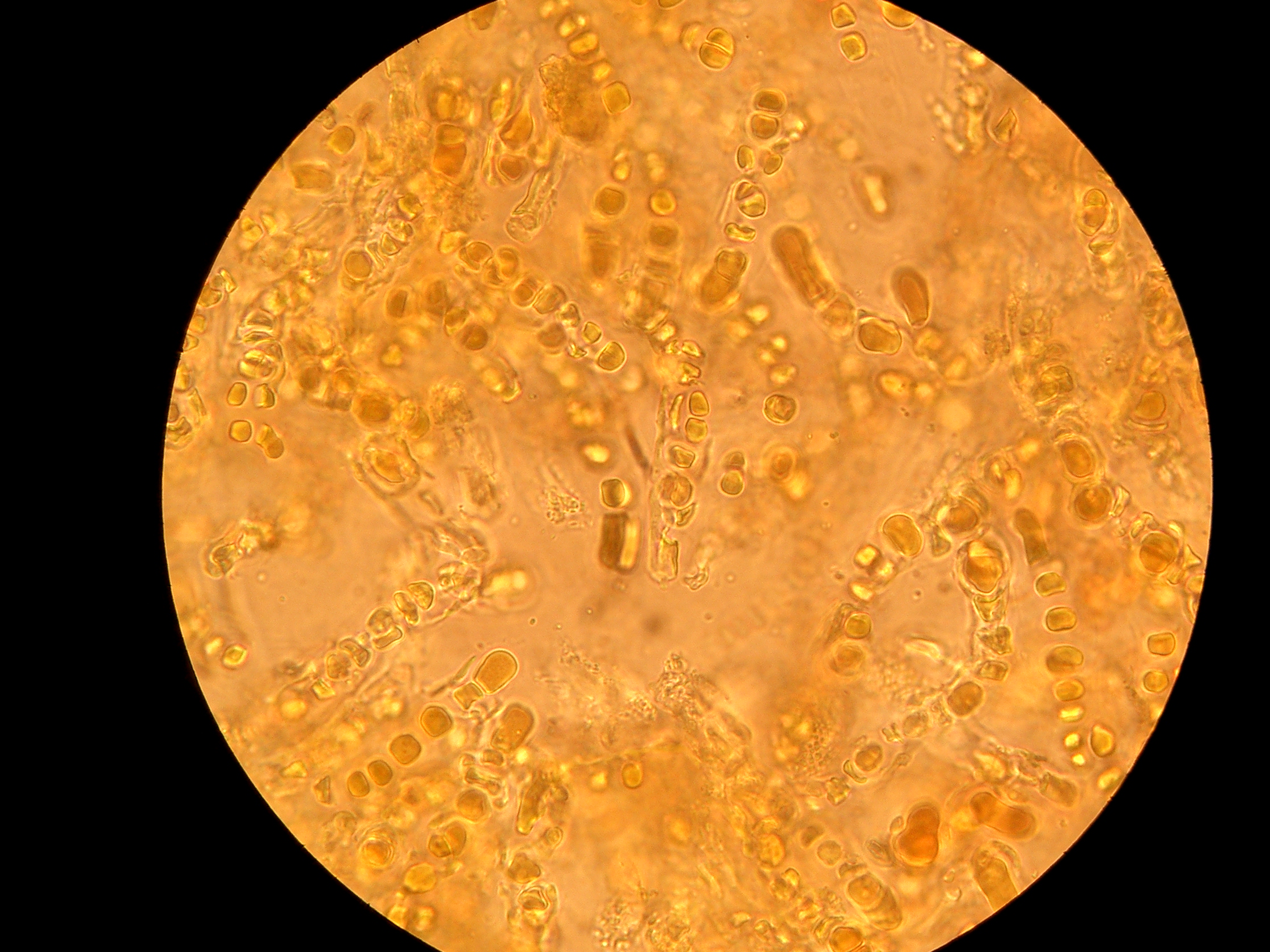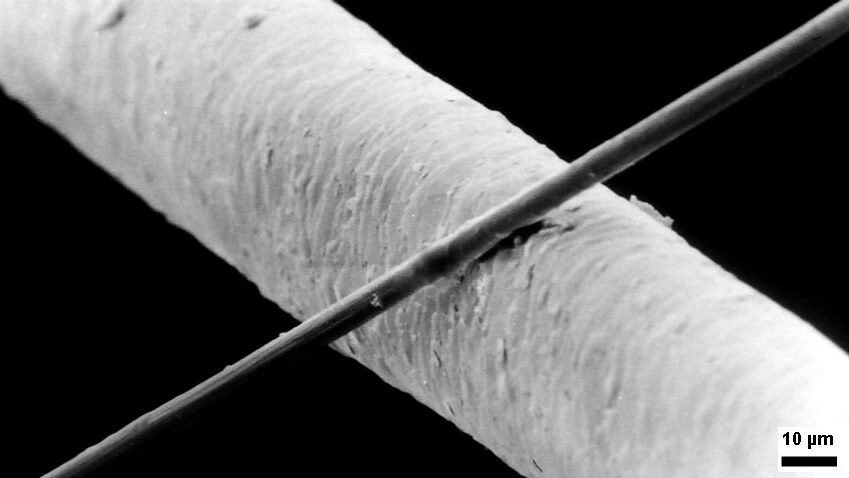|
Astrochapsa Sipmanii
''Astrochapsa sipmanii'' is a little-known species of corticolous lichen, corticolous (bark-dwelling) lichen in the family Graphidaceae. It is found in Singapore. Taxonomy The lichen was species description, formally described as a new species in 2015 by Gothamie Weerakoon and Robert Lücking. The type (biology), type specimen was collected by the first author from the Bukit Timah Nature Reserve at an elevation of . It is only known to occur at the type locality (biology), type locality. The botanical name, species epithet ''sipmanii'' honours Dutch lichenologist Harrie Sipman, "for his contributions to our knowledge of Singapore lichens". Description The lichen has a thin, olive-brown thallus up to in diameter, and lacks a distinct medulla (lichenology), medulla. The apothecia are more or less rounded to irregular, measuring 0.4–0.7 mm in diameter. The exposed disc is grey, and covered with a thick granular pruina. Ascospores number eight per ascus; they have between 3 a ... [...More Info...] [...Related Items...] OR: [Wikipedia] [Google] [Baidu] |
Gothamie Weerakoon
Gothamie Weerakoon ( si, ගෝතමී වීරකෝන්) is a Sri Lankan-based botanist, lichenologist and environmentalist. Early life and education After completing her primary education at the Devi Balika Vidyalaya in Colombo, she attended the University of Colombo, completing her PhD in 2013 at the Sri Jayawardenepura University. She emerged as the most active Sri Lankan lichen researcher. Career She has conducted research on South Asian lichens, discovering over 100 new species endemic to Sri Lanka. Some of the species she has discovered include ''Heterodermia queesnberryi'' and ''Polymeridium fernandoi''. In 2015, she wrote ''Fascinating Lichens of Sri Lanka'', which provides facts about lichen species endemic to Sri Lanka. She currently works as the senior curator of Lichens and Slime Moulds at the Natural History Museum of London and also with tea brand, Dilmah. Awards and recognition She is the first South Asian woman scientist to hold the Annual Grante ... [...More Info...] [...Related Items...] OR: [Wikipedia] [Google] [Baidu] |
Ascus
An ascus (; ) is the sexual spore-bearing cell produced in ascomycete fungi. Each ascus usually contains eight ascospores (or octad), produced by meiosis followed, in most species, by a mitotic cell division. However, asci in some genera or species can occur in numbers of one (e.g. '' Monosporascus cannonballus''), two, four, or multiples of four. In a few cases, the ascospores can bud off conidia that may fill the asci (e.g. '' Tympanis'') with hundreds of conidia, or the ascospores may fragment, e.g. some '' Cordyceps'', also filling the asci with smaller cells. Ascospores are nonmotile, usually single celled, but not infrequently may be coenocytic (lacking a septum), and in some cases coenocytic in multiple planes. Mitotic divisions within the developing spores populate each resulting cell in septate ascospores with nuclei. The term ocular chamber, or oculus, refers to the epiplasm (the portion of cytoplasm not used in ascospore formation) that is surrounded by the "bou ... [...More Info...] [...Related Items...] OR: [Wikipedia] [Google] [Baidu] |
Lichens Of Malesia
A lichen ( , ) is a composite organism that arises from algae or cyanobacteria living among filaments of multiple fungi species in a mutualistic relationship.Introduction to Lichens – An Alliance between Kingdoms . University of California Museum of Paleontology. Lichens have properties different from those of their component organisms. They come in many colors, sizes, and forms and are sometimes plant-like, but are not s. They may have tiny, leafless branches (); flat leaf-like structures ( |
Lichens Described In 2015
A lichen ( , ) is a composite organism that arises from algae or cyanobacteria living among filaments of multiple fungi species in a mutualistic relationship.Introduction to Lichens – An Alliance between Kingdoms . University of California Museum of Paleontology. Lichens have properties different from those of their component organisms. They come in many colors, sizes, and forms and are sometimes plant-like, but are not s. They may have tiny, leafless branches (); flat leaf-like structures ( |
Lichen Species
A lichen ( , ) is a composite organism that arises from algae or cyanobacteria living among filaments of multiple fungi species in a mutualistic relationship.Introduction to Lichens – An Alliance between Kingdoms . University of California Museum of Paleontology. Lichens have properties different from those of their component organisms. They come in many colors, sizes, and forms and are sometimes plant-like, but are not s. They may have tiny, leafless branches ( fruticose); flat leaf-like structures ( [...More Info...] [...Related Items...] OR: [Wikipedia] [Google] [Baidu] |
Astrochapsa
''Astrochapsa'' is a genus of lichen-forming fungi in the subfamily Graphidoideae of the family Graphidaceae. It has 28 species. The genus was circumscribed by Sittiporn Parnmen, Robert Lücking, and H. Thorsten Lumbsch in 2012, with '' Astrochapsa astroidea'' assigned as the type species. It was segregated from the genus '' Chapsa'', from which it differs in having a more frequently densely corticate thallus, an apothecial margin that is mostly recurved, and the almost exclusively subdistoseptate (with slightly thickened septa and angular lumina), non-amyloid ascospores. Species *''Astrochapsa albella'' *'' Astrochapsa alstrupii'' *''Astrochapsa amazonica'' *'' Astrochapsa astroidea'' *''Astrochapsa calathiformis'' *''Astrochapsa columnaris'' *''Astrochapsa elongata'' *''Astrochapsa fusca'' *''Astrochapsa graphidioides'' *''Astrochapsa kalbii'' *''Astrochapsa lassae'' *''Astrochapsa lobata'' *''Astrochapsa magnifica'' *''Astrochapsa martinicensis'' *''Astrochaps ... [...More Info...] [...Related Items...] OR: [Wikipedia] [Google] [Baidu] |
Type Species
In zoological nomenclature, a type species (''species typica'') is the species name with which the name of a genus or subgenus is considered to be permanently taxonomically associated, i.e., the species that contains the biological type specimen(s). Article 67.1 A similar concept is used for suprageneric groups and called a type genus. In botanical nomenclature, these terms have no formal standing under the code of nomenclature, but are sometimes borrowed from zoological nomenclature. In botany, the type of a genus name is a specimen (or, rarely, an illustration) which is also the type of a species name. The species name that has that type can also be referred to as the type of the genus name. Names of genus and family ranks, the various subdivisions of those ranks, and some higher-rank names based on genus names, have such types. [...More Info...] [...Related Items...] OR: [Wikipedia] [Google] [Baidu] |
Astrochapsa Astroidea
''Astrochapsa'' is a genus of lichen-forming fungi in the subfamily Graphidoideae of the family Graphidaceae. It has 28 species. The genus was circumscribed by Sittiporn Parnmen, Robert Lücking, and H. Thorsten Lumbsch in 2012, with '' Astrochapsa astroidea'' assigned as the type species. It was segregated from the genus ''Chapsa'', from which it differs in having a more frequently densely corticate thallus, an apothecial margin that is mostly recurved, and the almost exclusively subdistoseptate (with slightly thickened septa and angular lumina), non-amyloid ascospores. Species *''Astrochapsa albella'' *''Astrochapsa alstrupii'' *''Astrochapsa amazonica'' *'' Astrochapsa astroidea'' *''Astrochapsa calathiformis'' *''Astrochapsa columnaris'' *''Astrochapsa elongata'' *''Astrochapsa fusca'' *''Astrochapsa graphidioides'' *''Astrochapsa kalbii'' *''Astrochapsa lassae'' *''Astrochapsa lobata'' *''Astrochapsa magnifica'' *''Astrochapsa martinicensis'' *''Astrochapsa ... [...More Info...] [...Related Items...] OR: [Wikipedia] [Google] [Baidu] |
Lichen Product
Lichen products, also known as lichen substances, are organic compounds produced by a lichen. Specifically, they are secondary metabolites. Lichen products are represented in several different chemical classes, including terpenoids, orcinol derivatives, chromones, xanthones, depsides, and depsidones. Over 800 lichen products of known chemical structure have been reported in the scientific literature, and most of these compound are exclusively found in lichens. Examples of lichen products include usnic acid (a dibenzofuran), atranorin (a depside), lichexanthone (a xanthone), salazinic acid (a depsidone), and isolichenan, an α-glucan. Many lichen products have biological activity, and research into these effects is ongoing. Lichen products accumulate on the outer walls of the fungal hyphae, and are quite stable. Crystal deposits can be visualised using scanning electron microscopy. For this reason, even very old herbarium specimens can be analysed. The amount of lichen ... [...More Info...] [...Related Items...] OR: [Wikipedia] [Google] [Baidu] |
High-performance Thin-layer Chromatography
High-performance thin-layer chromatography (HPTLC) is an enhanced form of thin-layer chromatography (TLC). A number of enhancements can be made to the basic method of thin-layer chromatography to automate the different steps, to increase the resolution achieved, and to allow more accurate quantitative measurements. Automation is useful to overcome the uncertainty in droplet size and position when the sample is applied to the TLC plate by hand. One approach to automation has been the use of piezoelectric devices and inkjet printers for applying the sample. The spot capacity (analogous to peak capacity in HPLC) can be increased by developing the plate with two different solvents, using two-dimensional chromatography Two-dimensional chromatography is a type of chromatographic technique in which the injected sample is separated by passing through two different separation stages. Two different chromatographic columns are connected in sequence, and the effluent fr .... The procedu ... [...More Info...] [...Related Items...] OR: [Wikipedia] [Google] [Baidu] |
Thin-layer Chromatography
Thin-layer chromatography (TLC) is a chromatography technique used to separate non-volatile mixtures. Thin-layer chromatography is performed on a sheet of an inert substrate such as glass, plastic, or aluminium foil, which is coated with a thin layer of adsorbent material, usually silica gel, aluminium oxide (alumina), or cellulose. This layer of adsorbent is known as the stationary phase. After the sample has been applied on the plate, a solvent or solvent mixture (known as the mobile phase) is drawn up the plate via capillary action. Because different analytes ascend the TLC plate at different rates, separation is achieved. It may be performed on the analytical scale as a means of monitoring the progress of a reaction, or on the preparative scale to purify small amounts of a compound. TLC is an analytical tool widely used because of its simplicity, relative low cost, high sensitivity, and speed of separation. TLC functions on the same principle as all chromatography: a ... [...More Info...] [...Related Items...] OR: [Wikipedia] [Google] [Baidu] |
Micrometre
The micrometre ( international spelling as used by the International Bureau of Weights and Measures; SI symbol: μm) or micrometer ( American spelling), also commonly known as a micron, is a unit of length in the International System of Units (SI) equalling (SI standard prefix " micro-" = ); that is, one millionth of a metre (or one thousandth of a millimetre, , or about ). The nearest smaller common SI unit is the nanometre, equivalent to one thousandth of a micrometre, one millionth of a millimetre or one billionth of a metre (). The micrometre is a common unit of measurement for wavelengths of infrared radiation as well as sizes of biological cells and bacteria, and for grading wool by the diameter of the fibres. The width of a single human hair ranges from approximately 20 to . The longest human chromosome, chromosome 1, is approximately in length. Examples Between 1 μm and 10 μm: * 1–10 μm – length of a typical bacterium * 3–8 μm � ... [...More Info...] [...Related Items...] OR: [Wikipedia] [Google] [Baidu] |



_(2).jpg)

